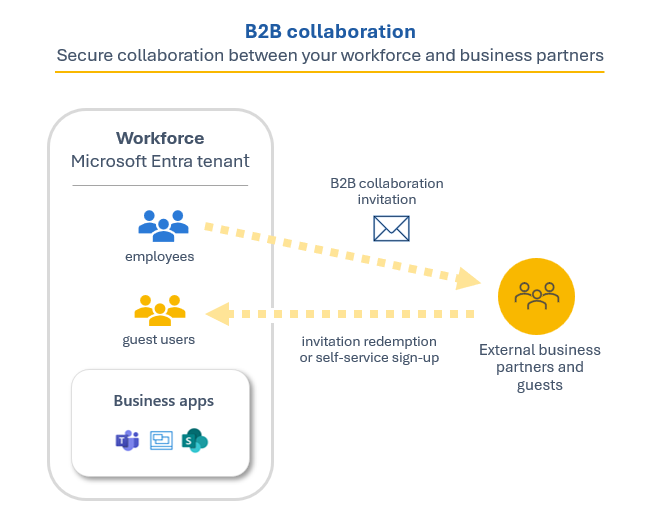
In today’s interconnected economy, companies increasingly turn to collaborative networks to expand reach and drive revenue. One of the most effective structures for enabling that collaboration is a partnership marketplace, a curated platform where businesses can discover, evaluate, and transact with complementary partners. Whether focused on technology integrations, channel resellers, referral partners, or service providers, a marketplace accelerates matchmaking and reduces friction for scaling ecosystems.
What exactly is a partnership marketplace? At its core, it is an online environment where organizations open up access to their customers and capabilities by connecting with third-party partners. Unlike e-commerce marketplaces that sell products to end customers, partnership marketplaces facilitate business relationships: joint offers, integrations, distribution agreements, co-marketing, and revenue-sharing models. The marketplace curates partner profiles, surfaces compatibility signals, and often provides tools for onboarding, contracting, and performance tracking.
Why build or join a partnership marketplace? The benefits are multifold. For platform owners, it increases product stickiness and driving acquisitions through partner-led channels. For partners, it provides visibility to new customer segments and simplifies sales cycles. For customers, marketplaces offer a vetted ecosystem of compatible solutions and services that enhance their primary purchase. By centralizing discovery and enabling deeper collaboration, partnership marketplaces reduce go-to-market costs and create repeatable growth engines.
There are several operating models to consider. A discovery marketplace lists partners with profiles and matchmaking filters, letting buyers make contact. An integrated marketplace focuses on technical integrations and joint solutions that deliver combined functionality. A managed marketplace adds transactional layers—contracts, billing, and fulfillment—allowing partners to sell directly to customers through the platform. Hybrid models combine discovery and transactions while embedding partner success services like enablement and co-sell support.
Key platform features that drive adoption include robust partner profiles, advanced search and recommendation engines, integration directories, automated onboarding workflows, and analytics dashboards. Secure onboarding and legal frameworks (eg, standardized contract templates and data-sharing agreements) reduce compliance burdens. Built-in co-marketing tools—campaign templates, resource libraries, and lead distribution—help partners act quickly. Lastly, APIs and developer tooling are essential for technical integrations and for partners to operationalize joint solutions.
Designing an effective partner experience starts with clarity of value. Partners need to know how they will win: through lead referrals, joint sales engagements, revenue-sharing, or marketplace transactions. Transparent rules of engagement and performance expectations avoid channel conflict. Onboarding should be fast and guided: product training, sales playbooks, and technical checklists make it easier for partners to become productive. Dedicated partner success managers or automated nudges can accelerate time-to-first-deal.
Measurement matters. Define success metrics aligned to business objectives: partner-sourced revenue, number of active partners, time-to-deal for partner leads, integration adoption rates, and customer satisfaction with partner-delivered services. Track behavioral metrics—engagement with partner content, responses to matchmaking invitations, and demo-to-deal conversion—to understand friction points. Use these insights to iterate the marketplace experience and prioritize investments in enablement, tooling, or partner recruitment.

Governance and incentives are often the trickiest aspects. Without consistent rules, conflicts arise: multiple partners targeting the same opportunities, unclear lead ownership, or misaligned discounts. Create a partnership policy that covers lead distribution, co-sell protocols, deal registration, pricing floors, and escalation mechanisms. Incentives should reflect the value partners bring; a mix of revenue share, referral fees, and marketing funding often balances motivation across different partner types.
Discovery and recruitment are ongoing. Start by inviting strategic partners who can deliver high-impact joint solutions and are willing to co-invest in marketing. Leverage existing customers and field teams to seed the marketplace with successful case studies. Publish clear criteria for partner eligibility and provide a straightforward application flow. A tiered ecosystem—with certified partners and integration partners—helps customers navigate differing levels of expertise and support.
Technical integration strategy is a differentiator. Decide whether your marketplace will host native integrations, API-level connectors, or recommend partner-built solutions. Provide SDKs, sandbox environments, and testing tools to reduce engineering bottlenecks. Standardize integration patterns to improve reliability and reduce maintenance costs. Offer resources such as integration blueprints and sample code to accelerate partner contributions and ensure a consistent user experience across joint solutions.
Customer experience must remain central. Ensure that partners are held to quality standards and that customers understand the scope of partner responsibility—who supports implementation, billing, and post-sale service. Publish partner SLAs and vet partners through certification processes. Collect customer feedback on partner interactions and display ratings or badges that help buyers make informed choices. A transparent marketplace fosters trust and improves conversion.
Legal and financial considerations are practical realities. Define tax, billing, and compliance processes early, especially if transactions flow through the marketplace. Decide if the platform will handle payments and payouts or if partners will bill customers directly. Implement privacy and data-sharing agreements that protect customer information while enabling necessary collaboration. For international marketplaces, account for currency conversion, tax reporting, and local regulatory requirements.
Common challenges include partner fatigue, marketplace discoverability, and maintaining quality as the ecosystem scales. Overcome these with continuous engagement: regular partner education, clear value demonstrations, and performance-based incentives. Invest in search optimization and category curation to make it easy for customers to find the right partner. Implement quality gates and periodic reviews to ensure partners continue to meet standards.
Successful marketplaces evolve. Begin with a minimum viable marketplace focused on a few core partner types and a clear value proposition. Pilot joint offerings and iterate based on feedback. Scale by automating onboarding, expanding integration options, and building a partner community for knowledge sharing. Leverage success stories to attract more partners, and continuously refine governance to avoid conflict as the ecosystem grows.
In conclusion, a thoughtfully implemented partnership marketplace can become a strategic growth channel that multiplies sales, expands product value, and deepens customer relationships. It requires a balance of technology, governance, partner enablement, and measurement. Organizations that design marketplaces around partner and customer success—not just listings—create networks that deliver sustainable, compounding returns. With the right strategy, a partnership marketplace becomes more than a directory: it is a dynamic engine for ecosystem-led innovation and revenue growth.